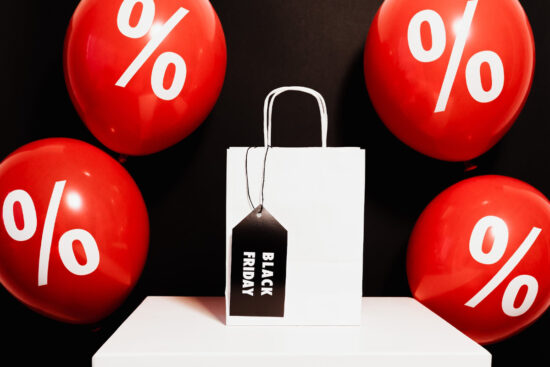As the Holiday season approaches, bringing with it the buzz of Black Friday and Cyber Monday sales, let’s dive into the latest BFCM stats and trends that characterize two of the busiest shopping days of the year.
These two days have become synonymous with massive sales, deep discounts, and some of the most intense FOMO sentiments one can think of. Originating in the United States, Black Friday and Cyber Monday have become global hallmarks, kicking off the unofficial start of the holiday shopping season.
When Did Black Friday and Cyber Monday Begin?
Black Friday, is traditionally held on the fourth Friday of November, following American Thanksgiving. Its roots can be traced back to the 1950s in Philadelphia, where it was used to describe the heavy and disruptive pedestrian and vehicle traffic that would occur the day after Thanksgiving. Retailers soon saw the financial upside and potential in this day and began offering significant discounts to attract even more shoppers. The name ‘Black Friday’ was later adopted to represent the point at which retailers begin to turn a profit, or are ‘in the black’.
As eCommerce began to flourish, retailers noticed a spike in online sales on the Monday following Thanksgiving. This was attributed to consumers continuing their shopping after Black Friday, with help from faster internet connections. In 2005, the term ‘Cyber Monday’ was coined by the National Retail Federation to encourage online shopping, offering exclusive deals that were only available online.
BFCM Stats by the Day
According to Adobe’s 2022 shopping data, Cyber Monday outpaced Black Friday in terms of online sales, recording a staggering $11.3 billion, compared to Black Friday’s $9.12 billion.
Remarkably, at the peak of Cyber Monday, consumers spent an astonishing $12.8 million per minute between 8pm and 9pm Pacific Time. Throughout the entire Cyber Week, total spending reached $35.3 billion which is up 4% year over year.
Which Products Are Shoppers Buying Most?
So, what do people spend their money on during Black Friday and Cyber Monday sales? Shopify’s annual report highlights Apparel and accessories, followed by Health and beauty and Home and garden as the top-selling categories.
This trend is consistent across various online selling platforms, as noted in a recent article by our friends over at Tidio. Other notable product categories include Electronics and computers as well as Handmade products and Cell phones and accessories.
Where Do Consumers Do Their Shopping?
Shopify‘s global sales, which hit $7.5 billion, revealed a significant trend when it came to purchasing methods in 2022. A whopping 73% of purchases were made via mobile devices, including smartphones and tablets, while desktops accounted for only 27% of sales. This underscores the growing appeal of mobile app shopping, offering a more convenient browsing and purchasing experience than traditional websites.
It may come as no surprise that the majority of BFCM shopping is now conducted online rather than in-store. The allure of online shopping lies in its convenience, the avoidance of crowded stores, and, importantly, the anticipation of better deals. A recent survey confirmed this, with shoppers expecting more substantial discounts online than in physical stores across various product categories.
When hunting for the best bargains, consumers are increasingly turning to their favorite social media platforms and Google. This trend suggests that marketers should consider increasing their paid advertising budgets throughout the Black Friday and Cyber Monday shopping period and actively promote their most attractive discounts across their social media accounts.
Top Cities and Countries During BFCM
From a geographical perspective, London, Los Angeles, and New York City are leading the pack in terms of shopper numbers, with the United States, United Kingdom, and Canada emerging as the top-selling countries globally.

Conclusion
Black Friday and Cyber Monday have become more than just two days of discounts — they are cultural phenomena that shape the retail landscape both online and offline. As technology and consumer habits evolve, so too will the nature of the Holiday shopping season, continuing to offer insights into the ever-changing world of retail and e-commerce.
So, are you gearing up to claim your share of the holiday shopping extravaganza? Let us know how you’ve been preparing in the comments. And, we’re curious – what’s on your shopping list this year?








